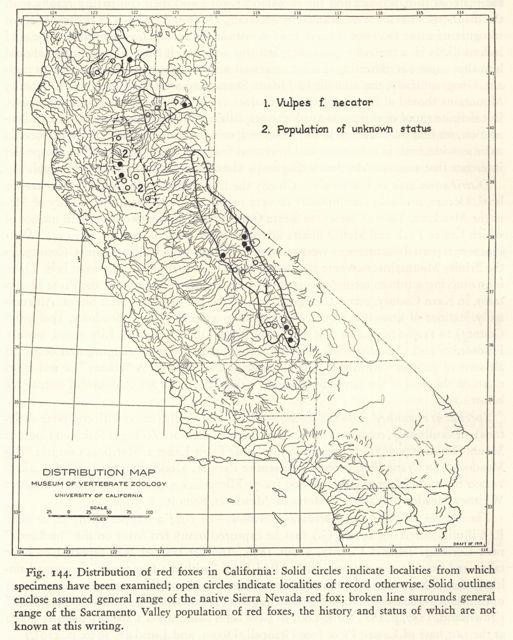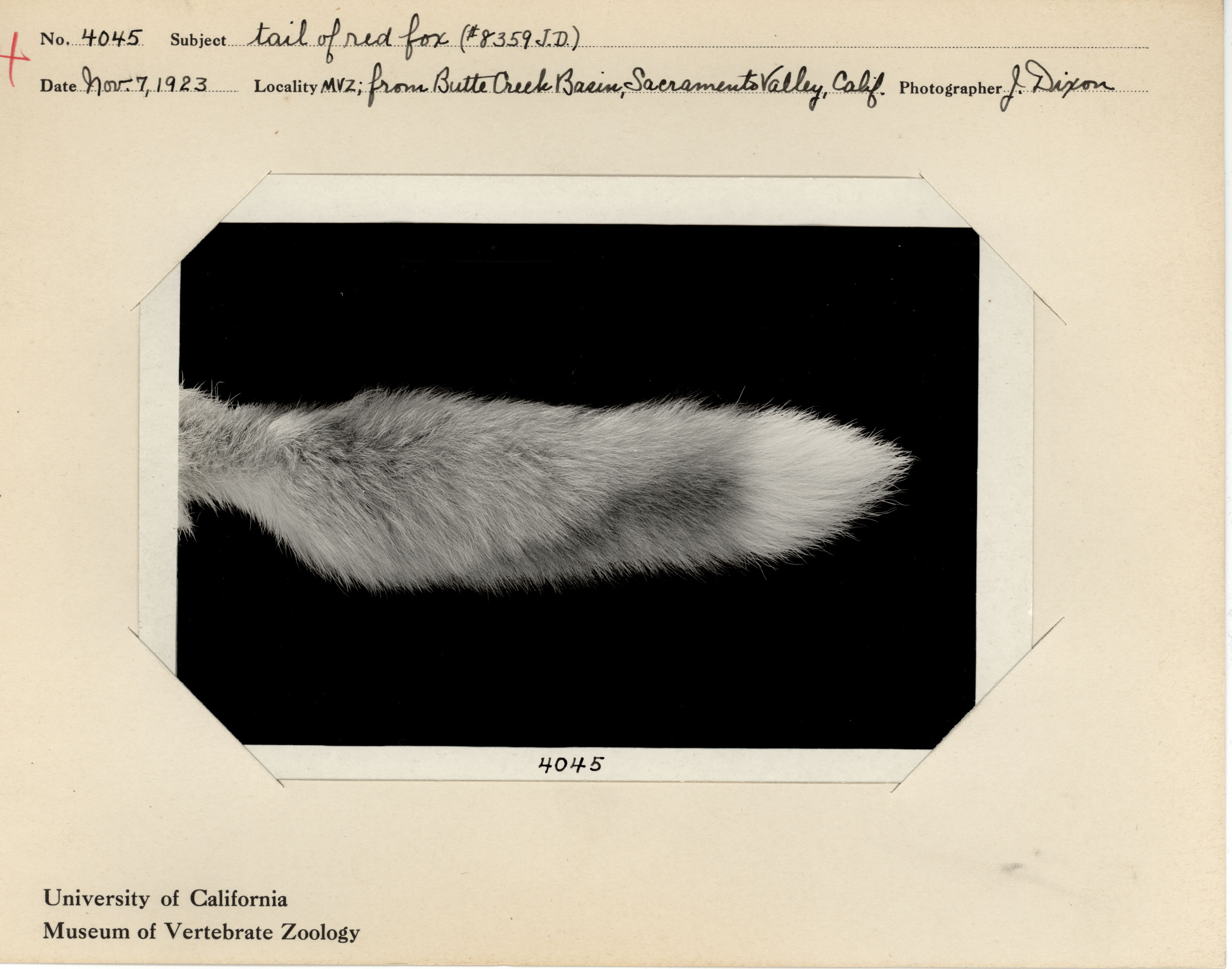Written by Alessandra J. Moyer, fourth year, Integrative Biology
Part II: A Wild West hypothesis
In November 1923, the Museum of Vertebrate Zoology received a red fox specimen from the Sacramento Valley. This specimen represented a population that was previously unknown to the MVZ scientists and was greeted with deep curiosity, particularly by Joseph Grinnell and Joseph Dixon, who endeavored to learn more about the unique group of Vulpes vulpes. Their obvious fascination with the Colusa County red foxes was probably due to the fact that the previously recognized native populations of red foxes on the West Coast were all alpine species, living in the mountains of the Cascade Range, the Sierra Nevadas, and the Rockies. And yet here was an isolated population living in the arid plains of the Sacramento Valley!
Grinnell, Dixon, and Jean Linsdale wrote Fur-Bearing Mammals of California: Their Natural History, Systematic Status and Relations to Man in 1937, and the mysterious red foxes of the plains were still on their minds. They had an idea about where the anomalous population might have come from, a hypothesis that was elaborated upon by Aryan I. Roest in his 1977 paper “Taxonomic Status of the Red Fox in California.” Starting in colonial times, and according to Roest, continuing through the Civil War era, English immigrants and their descendents actively imported red foxes (Vulpes vulpes regalis) from Europe to the American colonies on the East Coast in order to continue the British tradition of hunting foxes for sport. The introduced fox stock was brought along as settlers spread westward beyond the Mississippi. In 1869, the First Transcontinental Railroad was completed, facilitating the transport of settlers from the Midwest who were drawn by the lingering prospect of gold as well as cheap and plentiful land in the West. Roest speculates that this new form of transportation also encouraged settlers to bring sport-hunting foxes with them to their new homes in California. (Now of course, the idea of jodhpur- and boot-clad would-be aristocrats hunting foxes in the state where it is illegal to own a ferret seems absurd, but in fact it’s still a thing! See http://www.losaltoshounds.org/, if you really want to.) From there, of course, the thought was that some number of these introduced foxes made their home in the Sacramento Valley, happily hunting and mating until such a substantial population had been established that they could be regularly hunted for fur.

Red fox distribution map from Fur-bearing Mammals of California: Their Natural History, Systematic Status, and Relations to Man (1937), Volume II, page 382, by Joseph Grinnell, Joseph Dixon, and Jean Linsdale.
The alternative explanation was that the population was native, separated at some point in the past from the indigenous montane population of the Sierra Nevadas. Grinnell and friends felt that this explanation was unlikely and ended their discussion of the Sacramento Valley population as follows: “To sum up, then, there is a well-established population of red foxes at an unexpectedly low altitude, less than 350 ft. above sea level, in the upper Sacramento Valley. These foxes have been there at least forty years; but whether they are thoroughly native or were introduced by the white man is not known. The latter is the more likely surmise” (Grinnell, Dixon, and Linsdale 386).
At the time that Fur-bearing Mammals was published, scientific techniques that could shed light on the history of the Sacramento Valley population did not exist, and the origin of the ancestors of the MVZ holotype remained enigmatic. Recently, DNA analyses have been able to once again take a stab at deciphering the origin of this enigmatic red fox. The conclusions reached by the most recent study, and the resulting implications, will be discussed in the next post.
References
Grinnell, Joseph, Joseph Scattergood Dixon, Jean Myron Linsdale. Fur-bearing Mammals of California: Their Natural History, Systematic Status, and Relations to Man. Vol. 2. Berkeley: U of California P, 1937. Print.
Roest, Aryan I. “Taxonomic Status of the Red Fox in California”. California Department of Fish and Wildlife Data Portal. Oct. 1977. Web. 18 May 2014.
Los Altos Hounds’ Website. Los Altos Hounds. Web. 19 May 2014.
Related Links:

